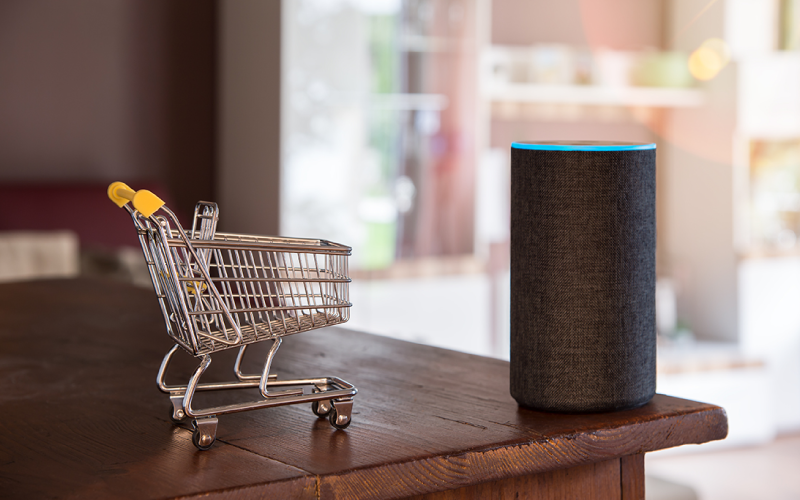Now, that retailers have realized they need to build and deploy voice shopping capabilities, the challenge lies in driving utilization and generating meaningful revenue.
Increasing number of retailers are starting to offer voice shopping experiences for customers today. However, it isn’t enough to launch a voice shopping assistant and expect it to create value for your business or customers.
In the modern eCommerce landscape, voice shopping applications must be built well, marketed effectively, and easy to use. Otherwise, retailers risk pouring time and money into adding voice shopping capabilities that do not add real value for their customers.
As consumers grow more comfortable with voice shopping, it will become increasingly important for retailers to offer consistent and predictable experiences that make online shopping easier than ever before.
Below are five essential tips for launching voice shopping apps that consumers love.
#1 – Do Less, Not More
One of the biggest mistakes that retailers make when jumping into voice shopping is that they try to do too much. Voice capabilities should augment a retailer’s existing eCommerce presence, not replace it.
Many companies try and replicate all of the functionality that exists on their websites instead of investing in what makes voice shopping unique. Don’t concern yourself with offering premium functionality or customizable shopping carts, as customers don’t expect these features for products that they purchase over voice.
Many retailers also tend to add voice shopping capabilities for their entire catalogs rather than focusing on items that drive the majority of revenue (think 80/20 here!). Start with high-margin goods that customers buy repeatedly. Replenishable items, such as coffee and makeup, are excellent candidates for voice shopping as consumers purchase these items often.
Narrow your scope and build a powerful voice application that does a few things extremely well. You won’t win long-term loyalty with an unfocused voice strategy.
#2 – Give Customers Reasons to Come Back
Once customers have made an initial voice shopping purchase, give them compelling reasons to do it again. You need to create stickiness early and convince shoppers that they have found their new go-to approach for particular items.
For example, offer discounts and promotions on goods that are specific to voice assistant usage. After customers buy voice-friendly items, give them a discount on their next purchase of that same item only if they use their Amazon Echo or Google Home device again.
Another strategy would be to provide valuable information to shoppers about their favorite products or past purchases through voice assistants. Configure your voice apps to offer order status updates or alert shoppers about upcoming events or deals.
Don’t just expect shoppers to return without a reason. . Incentivize them to use your uniquely powerful voice app over other retailer’s voice assistants. Prove that it is your customers’ best interests to continue voice shopping with you and only you.
#3 – Reduce Friction
With any innovative technology, there are obstacles that must be overcome before users or customers are fully on board. Voice shopping is no different.
Reduce as much friction as possible for customers when they are first beginning to use your voice shopping app. Limit account linking and authentication requests to use cases that absolutely require them as these steps may get in the way of shoppers making initial purchases.
Do not ask consumers to create online profiles right off the bat or force them to confirm email addresses. Doing so works against the hands-free promise of voice shopping and does not convince customers that they can interact with your brand without screens.
Only after you have established trust with your voice shopping customers should you ask them to create online profiles and link social accounts.
#4 – Tell Customers What They Can and Can’t Do
It is critical in the beginning to let your customers know what they can do with your voice app.
Don’t expect shoppers to understand how to use their smart devices to purchase goods from your store. Tell them exactly what to say to their Voice Assistant and highlight things they can do using voice. The welcome message when the user first starts the skill should guide the user by saying something like, “Welcome to XYZ Store, how can I help you? for example, you can say re-order my Coffee or where’s my order?”
You can get a lot of que’s on situational design from the Alexa Design Guide, its required reading for everyone working on our product :-).
There is no reason to be coy or mysterious here. Be upfront and explicit so that shoppers have full confidence when they go to make their first voice purchases.
#5 – Promote, Promote, Promote
You must be aggressive at promoting your new voice shopping capability.
Study what shoppers do on your site on a repeat basis and build your voice app to replace those manual activities. Then, let customers know that what they are doing with their fingertips could easily be done through voice. Make it obvious on your site and in your marketing materials that you offer this intuitive and time-saving shopping experience.
Your voice application should be easily accessible and visible where it creates the most value for shoppers. For example, use your order confirmation emails as opportunities to tell customers that they can check on the status of their orders via voice. You can also easily create awareness by sending coupons through emails that explain how shoppers can check for the latest promotions using voice.
Even though many consumers are aware of voice shopping, they may not realize that you offer the capability.
Tackling the Next Revolution in eCommerce
With these tips, you are ready to optimize your voice shopping app and drive utilization.
If you are looking to delight your customer using a voice shopping skill, Blutag can help you create those experiences quickly without any coding. To learn more about our platform, create a free account today.


